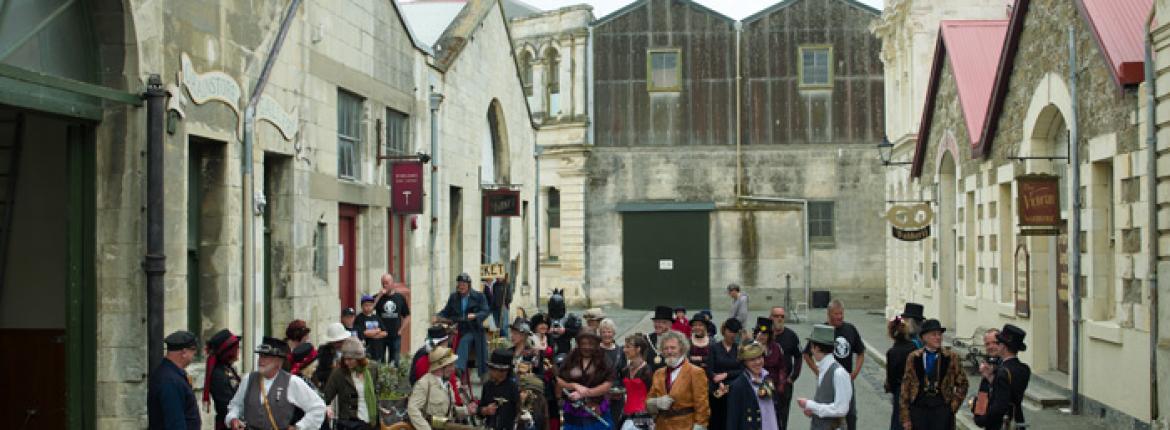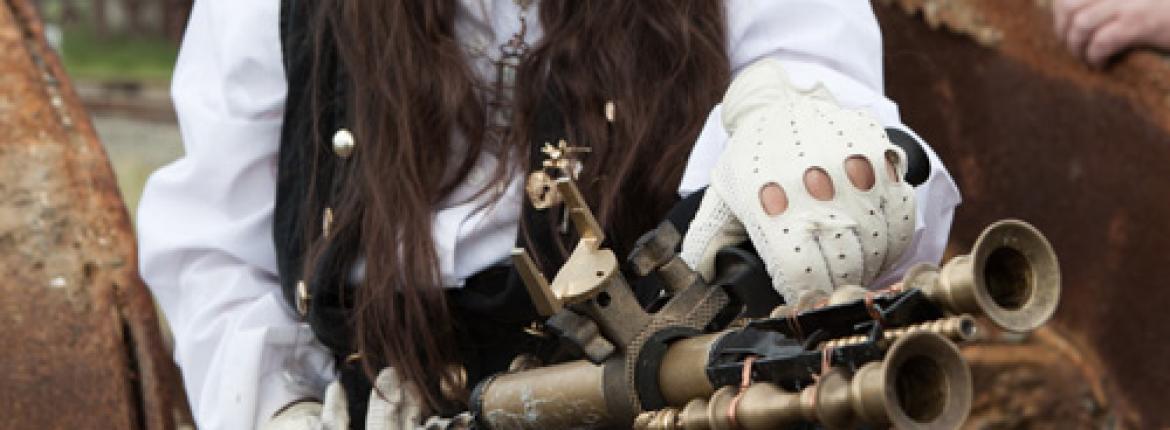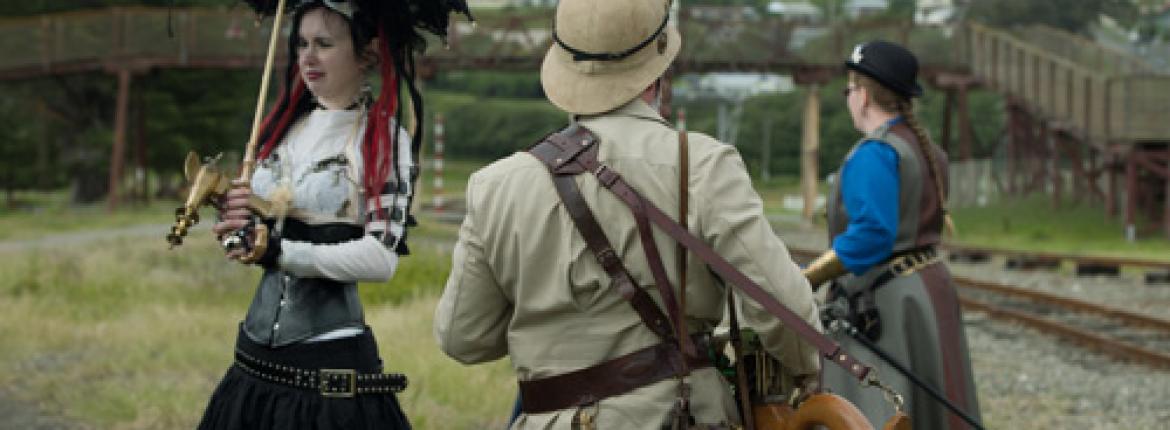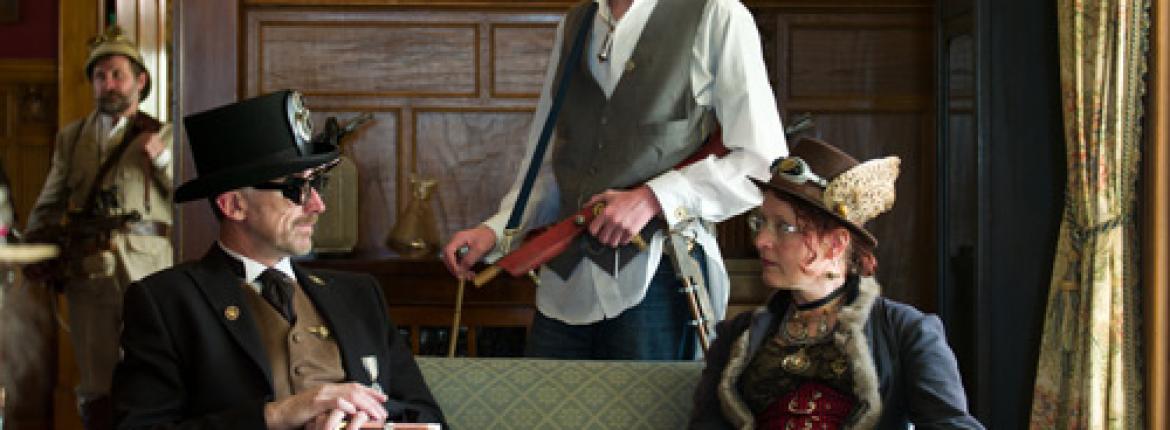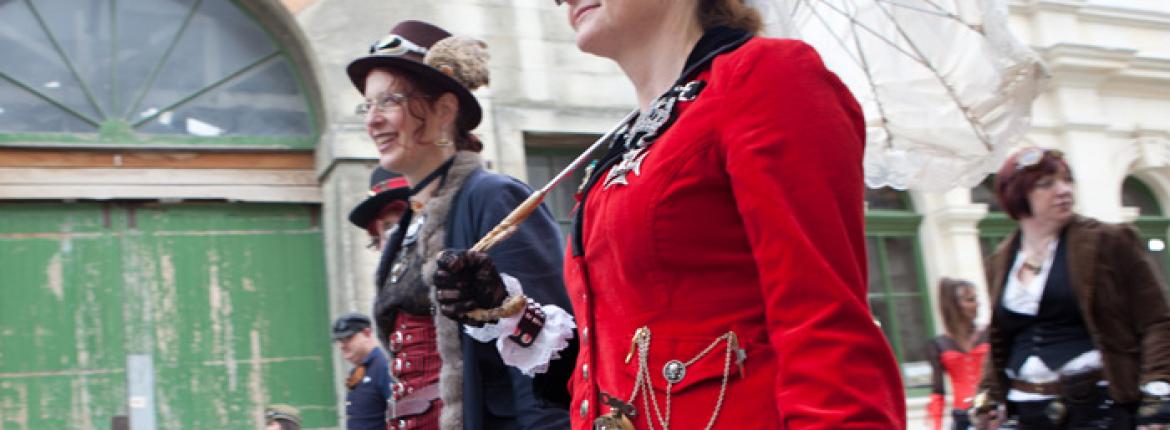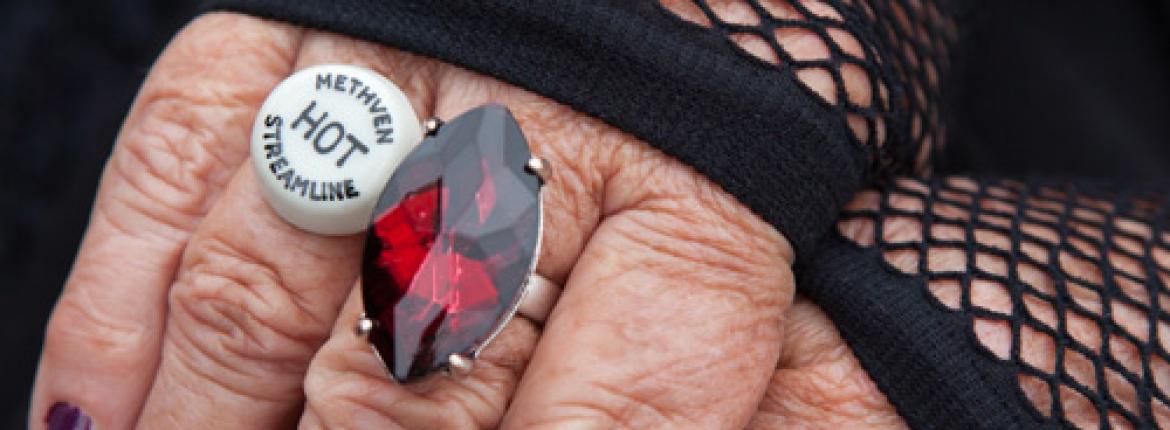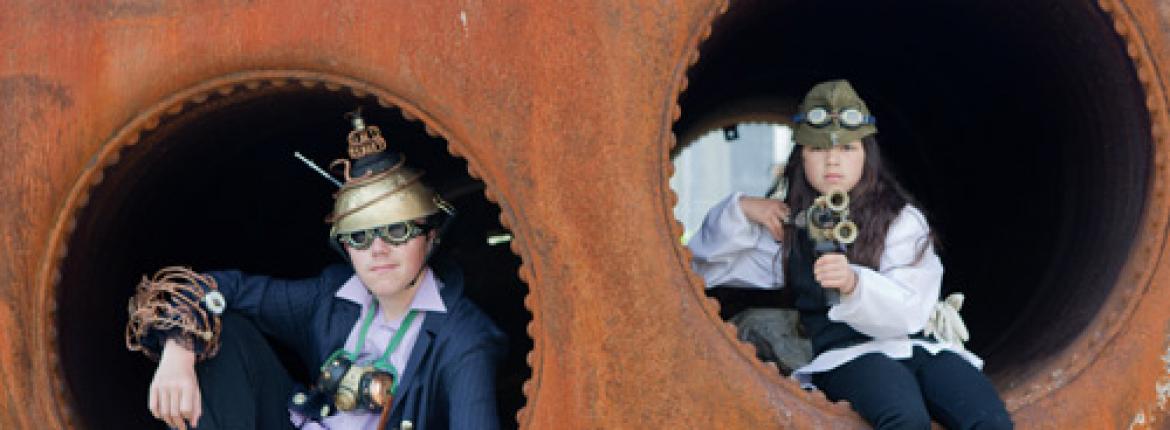Walk the cobbled streets of Oamaru’s heritage precinct outside school hours, and there’s a good chance of spotting the fugitive sky pirate, Sir Livin Hope, or a small girl carrying a case full of deadly ray guns.
These are characters who reside in the weird and wonderful world of Steampunk – an imagined Victorian future where electricity fizzled out and steam remained king.
Some call it science fiction, others an alternative history. It’s a style of dress, a form of art and, for a select few, a way of life. However it’s defined, one thing is certain: Steampunk is alive and well in Oamaru.
It all started two years ago, with a beer mug.
Oamaru Jeweller Iain Clark was at a victory dinner for Alf’s Imperial Army (a parody British battalion in which he is a captain) and had brought along a ‘steam-powered’ beer tankard that he had decorated with copper and coils.
It was as resplendent as it was ridiculous and caused a stir at the dinner. It was only later, after some internet research, that Iain realised he had made the town’s first Steampunk piece.
Next came the formation of the League of Victorian Imagineers, a group of locals who organise exhibitions and fashion shows. The first Steampunk event – Dr Grordbort’s Art Exhibition – featured artworks from a retro science fiction universe created by Weta designer Greg Broadmore, alongside pieces created by local artists.
“It was absolutely incredible,” says Sally Hope, City Councillor and one of the original Imagineers. “We got 6000 people through – people from all over New Zealand.”
Two years on, Oamaru is the self-proclaimed Steampunk Capital of the world.
At the time of my visit there are two Steampunk exhibitions on with a third about to open, larger-than-life Steampunk sculptures adorning the main street, and the front page of the Oamaru Mail announcing the arrival of the first piece (a vintage crane) of the world’s first Steampunk playground.
In any other town it might look gimmicky and out of place, but Oamaru’s point of difference is its heritage precinct – a complete Victorian streetscape from which traditional businesses, including a Penny Farthing shop and a bookbinder, operate.

“We clicked on very quickly that this should be the natural home of Steampunk because of our Victorian aesthetic, and that’s what’s worked tremendously in our favour,” says Sally. “We have the authentic backdrop and it gives credibility and substance to our Steampunk images.”
While not everyone in Oamaru can be seen walking the streets in Steampunk attire (think Victorian, then add flight goggles, a ray gun and a bionic arm), many locals have found ways to take part in the fun.
“There are a number of individuals who have really taken to Steampunk and are doing their own things – making costumes, making jewellery – and they walk around and live it as part of their lives,” says Sally.
Others have taken it to a whole different level – like three-man steam team Brian de Geest, Don Patterson and Jac Grenfell, whose full-sized demonical steam train has become an unlikely Oamaru icon. Two of Steampunk’s most enthusiastic participants are also two of its youngest. Sir Livin Hope and Courtly Storm are really twelve-year-old Bryce Taylor and his sister Natalee, aged eight, who dress up whenever they can.
“I probably will stay in the Steampunk just about forever,” says Natalee – who at 4pm on a Tuesday has changed from her school uniform into killer lace-up boots, a sky-blue Victorian dress and flight goggles.
“She’s always been the one who looks cute, then secretly is a little demon,” adds Bryce, who looks arresting in milky white contacts, a ray gun slung over his shoulder.
At the end of the day, it’s all just good fun.
“It’s a hoot,” says Victorian Imagineer Helen Jansen. “Here are people who wouldn’t otherwise be doing creative things getting excited, finding solutions and discovering potential in themselves. That’s what really gets me going.
“And hey – I like dressing up, too."
Reported by Alice Galletly for our AA Directions Autumn 2012 issue

